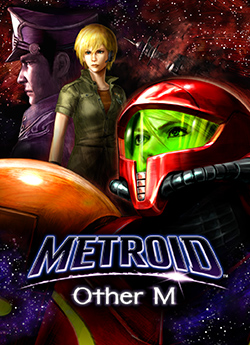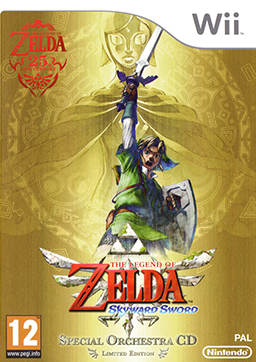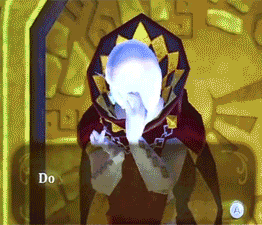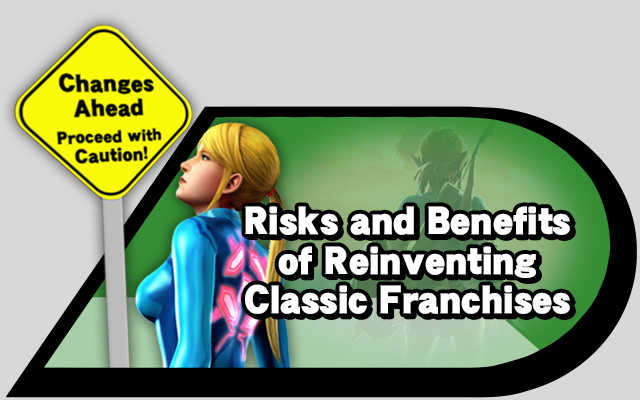Change. The term that people hate when it seeps into things they like.

Sound the alarms, a change has been made!
In the topic of gaming, change is a mixed bag. It’s brought us both well and ill-received products as a result of it. The latest major success story in regards to changing up a long-running series is obviously Breath of the Wild, reinventing Zelda to work with mechanics from Western games. Nintendo has shown that it will change up games within a franchise for various reasons, and has cases of both good and bad results of change as a result. Today, we’re comparing two each of Nintendo failures and success stories to see where they went right and wrong.
The Good: Kid Icarus Uprising

Granted, when you’re reinventing a series that hadn’t seen a game in over two decades, it’s a given that some change will occur. The first two Kid Icarus games, given the time period they released in, were both 2D action platformers, a staple in the late 80s to early 90s. The reinvention which Uprising introduced largely turned it into a third person shooter, radically different from the games that preceded it while still indulging in the goofy interpretation of Greek mythology and difficulty (thanks to a unique difficulty system) that defined the first Kid Icarus. It still had platforming, but that took a backseat in favor of shooting with a side of bullet hell.
That’s probably a compliment to him.
Despite the drastic change, Uprising was still received very well on account of being a competently made game, excelling in the story and presentation departments, while its single most crippling flaw was the controls. While not a deal-breaker by themselves, the layout was still rather awkward for the platform given the limitations of the control layout for a shooter, a problem that has persisted in DS shooters since the days of titles like Metroid Prime Hunters (and I like that game a lot, but those controls definitely still leave a lot to be desired).
The Bad: Metroid: Other M

Of course this was coming up. Other M reinvented Metroid in a number of ways, including voice work, a control scheme that switches between typical and motion control, and a greater emphasis on plot. For those three specifically, it messed up. Control-wise, the team’s decision to restrict themselves to just the Wiimote led to an awkward mess of a control scheme that wants to fit everything Samus Aran can do onto a controller with a d-pad and four buttons. That would be fine if the game didn’t have as many gameplay elements as it does.

Go ahead and picture playing Metroid Prime on this layout.
A d-pad in a three-dimensional game is all sorts of wrong, the first person aiming is sloppily implemented for the sake of using those motion controls, and it’s quite restricting, which are issues that wouldn’t exist if the GameCube, Classic or even Nunchuck controllers were an option. The greater emphasis on plot wasn’t necessarily bad, as Metroid Fusion had pulled that stunt and succeeded, but it was handled in a haphazard way that contradicted a lot of the series’ own plot points. Tying into said plot, the voice work, most notably for Samus herself, was off, delivering a heroine very far from the legendary hunter who at that point had killed legions of Space Pirates, several eldritch abominations, her arch-nemesis (repeatedly) and the deadliest species in existence. The changes here brought the game down immensely in the eyes of many, which is why it remains a black sheep in the series.
The Good: Breath of the Wild

The genius of Breath’s reinvention for Zelda goes without saying at this stage, so this section will be brief. Adding in elements from well-known and highly popular Western RPGs as well as fellow Japan-developed projects like Dark Souls makes for a highly inclusive adventure able to draw in a significant amount of new players based on familiarity while still being a Zelda title for the hardcore fanbase. It’s not a perfect game by any means, with some balancing issues, the weapon durability, and some glaring technical issues, some more harmful to the overall experience than others, but the reception it has gotten indicates that the changes made were overall a smart move.

These are also smart, to the point that encountering one will cause your blood to boil.
The Bad: Skyward Sword

This is technically a contradictory choice to put as bad; Skyward Sword, critically, was still an achievement, being praised as a phenomenal title for the series, but one has to look past that in order to find the wealth of reasons for which some fans dislike the game. And some of the reasons Skyward Sword is disliked makes it look like the antithesis of the game that followed it, that being Breath of the Wild.

The average non-fan talking about the game’s mechanics.
Compared to most Zelda outings, the game is quite linear, on top of lacking a main contiguous world, and what you get is one where the environments slowly became more like courses to run around in multiple times for the sake of the story. The controls (have you noticed this trend yet) were highly debated, being motion controls; some saw it as innovative, while others found them unwieldy, turning enemies like the electric Bokoblins into threats more unbearable (unboarable?) than Ganondorf himself. And finally, there are a bunch of interesting mechanics, such as Loftwing flying and the pseudo-RPG mechanics like degrading shields, that aren’t explored to their fullest.
Breath, released six years later, practically does away with the problems mentioned above in its own way, being a fully open ended title with no linearity whatsoever(there’s an ultimate objective that rhymes with ‘kill Ganon’, but how you approach it is all up to you and there are many ways to do so), where the story is assembled by the player as they go along as opposed to being spoon fed(and assembling said story is entirely optional), and the mechanics given to you via your Sheikah Slate are all used repeatedly. And there’s proper, if divisive, weapon durability.
These examples, of course, are just a fraction of the many instances of good and bad change on Nintendo’s part, and listing all of them would have us here for weeks. The question now is what other changes lie around the corner for the company.









There are only 2 gripes I have with Other M.
1. The forced first person sequences.
2. It assumes the player has read the manga and played Super Metroid. Like Prime doesn’t exist.
I think they should have included the manga with it. I have Japanese copies but can’t understand what gets said. But in Sakamoto’s defence, he can’t tell the story like that without an advanced console. I disagree about Samus’ voice because nobody actually heard her talk before Other M and comparing a few lines or the unused Prime lines just doesn’t fly IMO.
Other M’s biggest mistakes are assuming people already knew previous instalments and pretending Prime didn’t exist.
It’s not like the manga was really a required thing – it’s basically nothing more than a retelling of her origin story, which has been covered before. Besides, wasn’t it common knowledge that Ridley was Samus’s personal enemy? The real issue is why Samus didn’t recognize Ridley when he was the “Mysterious Creature” – Being fooled by Rabbit-Chicken Wing Ridley is one thing, but the in between clearly has Ridley’s most distinctive features on display.
And as with the whole previous installments thing, they usually give a slight recap of the previous entries to follow along with the story – providing an earlier entry wasn’t a sequel in terms of continuity – like Fusion.
As far as pretending Prime doesn’t exist – yeah that sucks but it’s also not like Nintendo really pays much attention to continuity in the first place. The Prime series still exists so it doesn’t matter.
Fire Emblem: Awakening may be a good case of “reinventing,” though not as drastic as Uprising and Breath of the Wild may be. Some of the mechanics were altered to bring back things not seen in the franchise out west (marriage), but the tone, art direction, particular handling of children mechanics, supports, etc certainly made a “new formula” that Fates followed after and split the fanbase pretty hard. May be a topic worth discussing.
I’ve always seen Other M as an expanded Metroid Fusion – bungled with 3D and motion controls.
Metroid Fusion worked well linear, but it was on the GBA where it was portable and there was battery life to worry about – Other M didn’t need that kind of layout.
Could star fox zero be considered a bad change or an nostalgia cash grab? I feel like that could be reinventing star fox by making it another star fox 64, and another one.
That really depends on how you look at the game. I’m an outsider to the franchise, so my view is presented as someone who hasn’t touched it but has seen the wealth of reviews and gameplay footage out there.
It’s not really a reinvention since it’s literally Star Fox 64 with an HD coat of paint, despite the statements about it neither being prequel, sequel or strict remake of said game. It’s Star Fox 64 with highly divisive motion controls. Because I’ve never played Star Fox at all, I couldn’t tell you more in depth about stuff like the controls, but if someone more knowledgeable on Star Fox and looking through the comments cares to support or tear down my points, feel free.
I would consider Zero to be Nintendo’s attempt at ‘reviving’ Star Fox – Frankly because they had noticed (Read: Badgered into noticing) fan demand for the series and according to interviews couldn’t find a way to present the series in a way they were satisfied with.
I think part of the main reason why Zero was closely modeled after 64 was because that was the series’ highest selling game and a fan favorite, it’s why 64 was chosen for the 3DS re-release as well. That and also if the game did well, would present a good starting point moving forward.
So while “Nostalgia Cash Grab” would be an appropriate label for it, it seemed more like Nintendo really wanted Star Fox Zero to sell well and find a new IP to work with. I would point it as more of a passion project though – Miyamoto got really involved with the controls and wanted the player to not only immerse themselves into the game with the Gamepad’s cockpit screen, but also showcase a more cinematic space drama type of experience with the TV.
Since it seems it didn’t have that effect, any new Star Fox will have to depend on how they’re willing to take the controls moving forward.